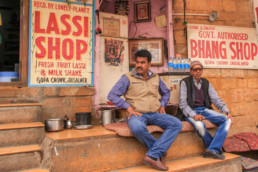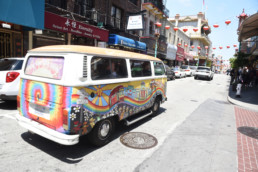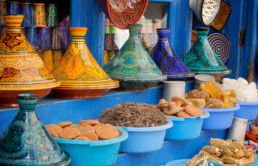The High Notes History of Cannabis Edibles
Humans have consumed cannabis for a very, very long time.
Cannabis consumption began in Asia thousands of years ago and moved through the Middle East into Africa, Europe, and eventually North and South America. And from the start, weed-infused recipes have influenced wellness, recreation, and spirituality in each continent.
Despite its long history of consumption, most people don’t know a lot about cannabis. We thought we’d expand your knowledge with our helpful guide to the history of cannabis edibles.
3,500 Years Ago: Bhang in India
Sacred Hindu texts called Vedas described cannabis consumption as early as 500 BCE.
In one story, the god Shiva falls asleep next to a cannabis plant after arguing with his family. When Shiva wakes, he feels instantly rejuvenated after eating the leaves of the cannabis plant; from that day forward, he’s known as the “Lord of Bhang.”
Bhang is an edible paste made by crushing the bud and leaves of the cannabis plant with a pestle and mortar. The white paste is mixed with spices and yogurt or milk throughout India to make a bhang lassi drink. Bhang is also combined with fruit and sugar to make edible balls called bhang goli.

1,000 Years Ago: Mahjoun in Morocco
Enjoyed by Moroccans since 1000 CE, mahjoun is a sweet, savory mixture of hash, dried fruits, nuts, honey, and spices. “Hashish jam,” as it’s known, was popular with Berber mystics, artists, and healers. Cannabis is mentioned throughout the text One Thousand and One Nights.
500 Years Ago: Italian Cannabis Oil
Bartolomeo Platina included a recipe for cannabis oil in the world’s first printed cookbook, On Honourable Pleasure and Health. The papal ghostwriter instructs the reader to heat cannabis in nard oil to create “a health drink of cannabis nectar.”

60 Years Ago: “Haschich Fudge” in San Francisco
The late painter, writer, and poet Brion Gysin grew fond of mahjoun during his time in Morocco. He sent a recipe to writer Alice B. Toklas, who included it in a cookbook in 1954. Her “Haschich Fudge” calls for dates, figs, almonds, peanuts, spices, and “a bunch of cannabis sativa,” which caused an uproar in America.
Toklas claimed she didn’t realize until after the book was printed that hashish was illegal. Nevertheless, she was well aware of the plant’s intoxicating effects: “Euphoria and brilliant storms of laughter; ecstatic reveries and extension of one’s personality on several simultaneous planes are to be complacently expected.”
50 Years Ago: Pot Brownies in San Francisco
The late Mary Jane Rathburn perfected her pot brownie recipe while working as a waitress at IHOP in the 1970s. She sold her brownies on the streets of San Francisco. By the end of the decade, business was booming. Soon, her gooey, chocolatey treats earned a reputation for easing pain and nausea in chronically ill patients. Inspired, “Brownie Mary” started giving away her brownies at AIDS and cancer wards.
Police arrested Rathburn in 1981, but that didn’t deter her. She campaigned for cannabis legalization for the rest of her life. She was successful. In 1991, 74% of voters approved Proposition P.
The measure ensured that physicians would no longer be penalized for prescribing cannabis. Five years later, California became the first state to legalize medical marijuana.
Today: Ready-Made Edibles in America
Packaged edibles are the latest development in weed-enhanced recipes. Ready-made cannabis-infused foods offer the same convenience of grabbing a chocolate bar off the shelf and a precise THC dosage.
High Notes cannabis chews come in hefty 50 mg THC doses, but you needn’t eat the whole thing. Just bite off however much you feel and get on with your day. No matter your personal history with edibles, you’ll be sure to enjoy our chews.
